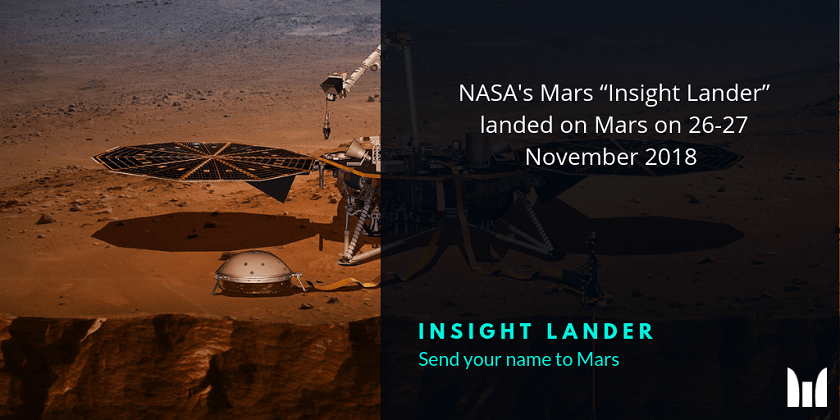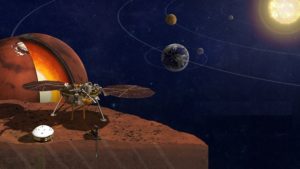NASA’s Mars “Insight Lander” landed on Mars after 7 months of launch
NASA’s Insight Lander has landed safely on the planet Mars. This vessel reached the surface of Mars on the night of 26-27 November 2018 at 1:20 pm Indian time. When it landed on the surface of the planet, it came at a speed of zero at a speed of 12,300 miles per hour, within six minutes.
After this, it came out of the parachute and landed on three feet. NASA has prepared this vehicle to understand the process of building Mars and to discover new facts associated with this planet. Mars ‘Interior Exploration Using Seismic Investigations, Geodesy and Heat Transport’ (Insight) Lender was launched in May 2018. Prior to this, in 2012, the ‘Curiosity Rover’ was sent to the world, which had sent a concrete information about Mars to Earth.
About InSight Mission:
This NASA vehicle will study the internal conditions of Mars with the help of the seismometer.
InSight Lander, who gets energy from solar energy and battery, has been designed to operate for 26 months.
This NASA ship will send the information of the red planet to Earth. This vehicle will use the seismometer to study the planet’s internal synthesis. This will help to find out how Mars was built and why it is so different from the Earth.
The leading scientist of the site’s site, Bruce Banner, said that this is a project like a time machine, which will find out how 4.5 billion years ago it became a rocky planet like Mars, Earth, and Moon.
The senior scientist of the Project, Bruce Banner, said that this is a project like a time machine, which will find out how 4.5 billion years ago it became a rocky planet like Mars, Earth, and Moon.
Features of Insight Lender ship:
The complete name of the Insight of approximately 358 Kg is ‘Interior Exploration Usage Seismic Investigations’.
This vehicle, powered by solar energy and battery, has been designed to work for 26 months.
NASA has spent $ 1 billion (70 billion Indian rupees) in this vehicle.
This mission of 7,000 crores includes scientists from more than 10 countries including the US, Germany, France and Europe.
Its main device is the seismometer, which was created by the French Space Agency.
After landing, the ‘robotic arm’ will put a seismometer on the surface. The second main device is ‘self-hammering’ which will record the flow of heat in the surface of the planet.
Read more


